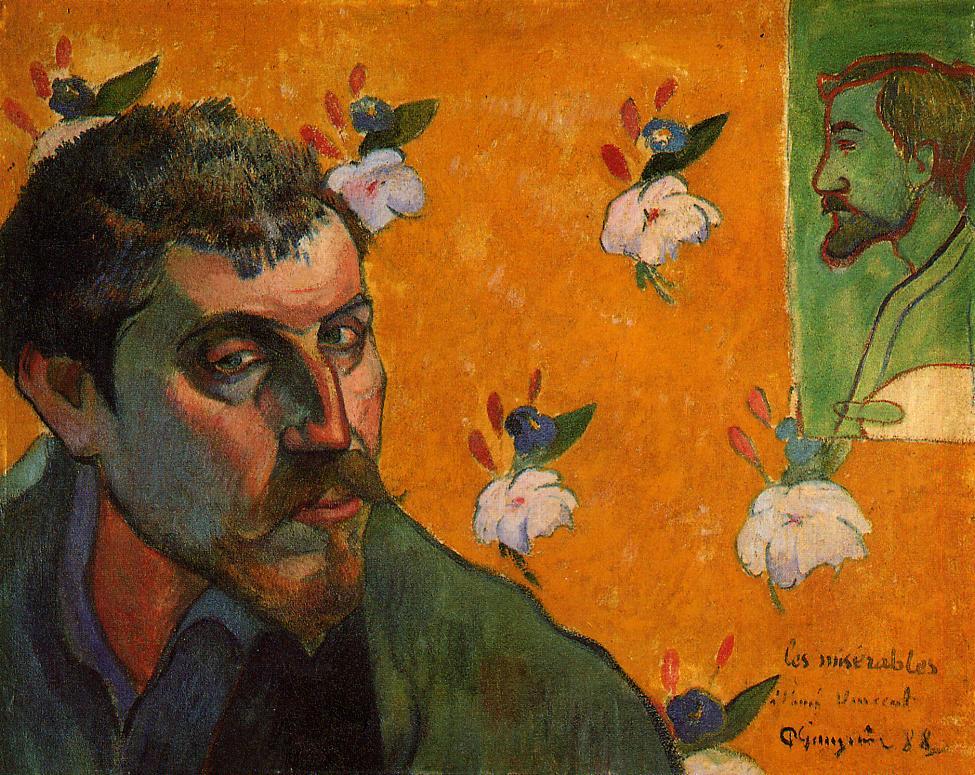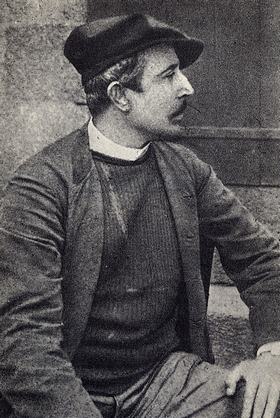impressionist-ART.com
Impressionism & Post-Impressionism
Paul Gauguin 1848-1903
 Self-Portrait |
Eugene Henri Paul Gauguin (7 June 1848 – 8 May 1903) was a leading Post-Impressionist painter. His experimentation with colouring led directly to the Synthetist style of modern art while his work under the influence of the cloisonnist style paved the way to Primitivism and the return to the pastoral. He was also an influential practitioner of wood engraving and woodcuts as art forms. Paul Gauguin was born in Paris to journalist Clovis Gauguin and half-Peruvian Aline Maria Chazal, daughter of socialist leader Flora Tristan. In 1851 the family left Paris for Peru, motivated by the political climate of the period. At the age of seven, he and his family returned to France, but imagery of Peru would later influence his art.

Gauguin 1888
in Pont-Aven
Paul Gauguin Gauguin was interested in art since childhood. He began painting at an early age. He would also visit galleries and purchase work by emerging artists. Gauguin formed a friendship with artist Camille Pissarro, who introduced him to other artists. Gauguin rented a studio and showed paintings in Impressionist exhibitions held in 1881 and 1882. Over two summer vacations, he painted with Pissarro and occasionally with Paul Cezanne. Like his friend Vincent van Goghh, with whom he spent nine weeks painting in Arles in 1888, Gauguin experienced depression and at one time attempted suicide. He felt that traditional European painting had become too imitative and lacked symbolic depth. By contrast, the art of Africa and Asia seemed to him to be full of mystic symbolism and vigour. There was a vogue in Europe at the time for the art of other cultures, especially that of Japan. He was invited to participate in the 1889 exhibition organized by Les XX. Under the influence of folk art and Japanese prints, Gauguin evolved towards Cloisonnism. Gauguin paid little attention to classical perspective and eliminated subtle gradations of colour, thereby dispensing with the two most characteristic principles of post-Renaissance art. His painting later evolved towards "Synthetism" in which neither form nor colour predominate each having an equal role.